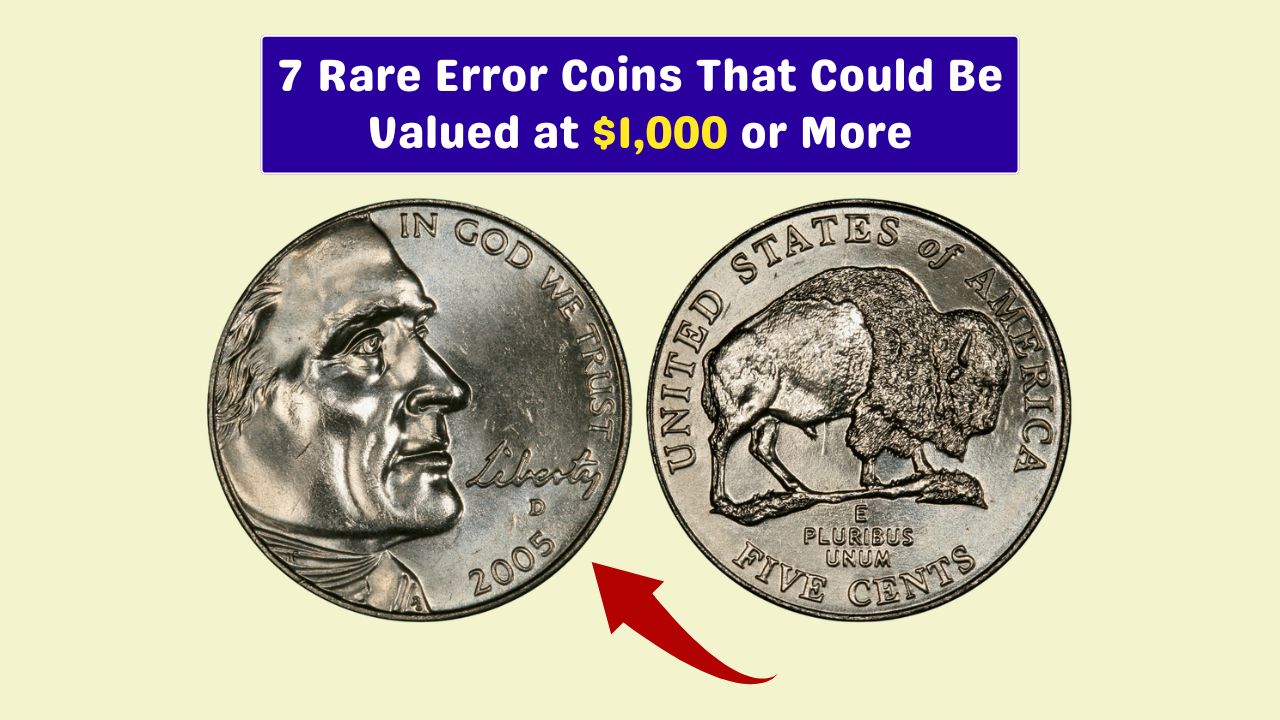Coin collecting isn’t just for history buffs or hobbyists—it’s a bit like modern-day treasure hunting. You never know when you’ll stumble upon a hidden gem hiding in your pocket change. Among the rarest and most valuable finds are error coins—mistakes made at the U.S.
Mint that turn regular coins into serious collector goldmines. If you’ve got a stash of coins lying around, you might want to give them a second look. Let’s look into seven rare error coins that could be worth $1,000 or more.
Doubled
Let’s kick things off with a legend—the 1955 Doubled Die Lincoln Cent. This iconic coin has obvious doubling in the words “LIBERTY” and “IN GOD WE TRUST,” along with the date.
That doubling happened when the die used to strike the coins shifted slightly, creating the now-famous error. In circulated condition, it’s worth about $1,500. But if you’ve got one in mint condition? It can go for over $20,000.
Three-legged
Next up, the 1937-D Three-Legged Buffalo Nickel. Sounds strange, right? Well, it’s exactly what it says—a buffalo with only three legs. This happened because the die was over-polished, erasing one of the legs completely.
If it’s worn down, this quirky error is still worth around $500. But a pristine version? That can rake in more than $99,000 at auction.
Copper
Now for a true unicorn—the 1943 Copper Lincoln Cent. During World War II, the Mint used steel for pennies to save copper for the war effort. But a few copper blanks from the previous year slipped through and were used in 1943.
Only a handful are known to exist. These have sold privately for over $1 million. If you find one, you’re basically holding a lottery ticket.
Speared
The 2005-D Speared Bison Jefferson Nickel gets its name from a deep die gouge that looks like a spear going through the bison. This sharp-looking error makes it super collectible. Many have sold for $1,000 to $2,000, depending on condition. A clean, well-struck example will always fetch top dollar.
No-S
Ever heard of the 1975 No S Proof Roosevelt Dime? It’s a proof coin that’s missing the “S” mintmark from San Francisco. Only two of these are confirmed to exist. Yep, just two. And one has sold for $456,000. Since proof coins go through extra care during minting, an error like this is almost unheard of.
No-P
While we’re talking missing mintmarks, don’t forget the 1982 No P Roosevelt Dime. These coins were minted in Philadelphia, but a few didn’t get the “P” mark. They’re more common than the No S dime, but still rare enough to pull in $100 to $1,000 depending on the grade.
Table
Here’s a quick breakdown of the coins and their estimated values:
| Coin Type | Key Feature | Value Range |
|---|---|---|
| 1955 Doubled Die Cent | Doubling on text/date | $1,500 – $20,000+ |
| 1937-D Three-Legged Nickel | Missing buffalo leg | $500 – $99,000+ |
| 1943 Copper Cent | Wrong metal (copper) | $1,000,000+ |
| 2005-D Speared Bison Nickel | Die gouge (spear) | $1,000 – $2,000+ |
| 1975 No S Proof Dime | Missing “S” mintmark | Up to $456,000 |
| 1982 No P Dime | Missing “P” mintmark | $100 – $1,000 |
These coins show just how wild and valuable minting errors can be. Whether it’s a missing letter or an extra leg (or lack thereof), these oddities can turn into major paydays. So next time you’re about to spend some spare change, give it a second glance—you might just have a tiny piece of history in your hand worth a small fortune.
FAQs
How do I spot a doubled die coin?
Look for clear doubling on letters or numbers, especially the date.
Are all 1943 pennies valuable?
No, only the copper 1943 pennies are valuable—steel ones are common.
Where can I sell rare error coins?
Auction houses, online marketplaces, and coin dealers are good options.
Is it rare to find error coins in change?
Yes, but it’s possible. Always check your pocket change and rolls.
How can I verify a coin’s value?
Use a coin grading service or consult a reputable coin dealer.








